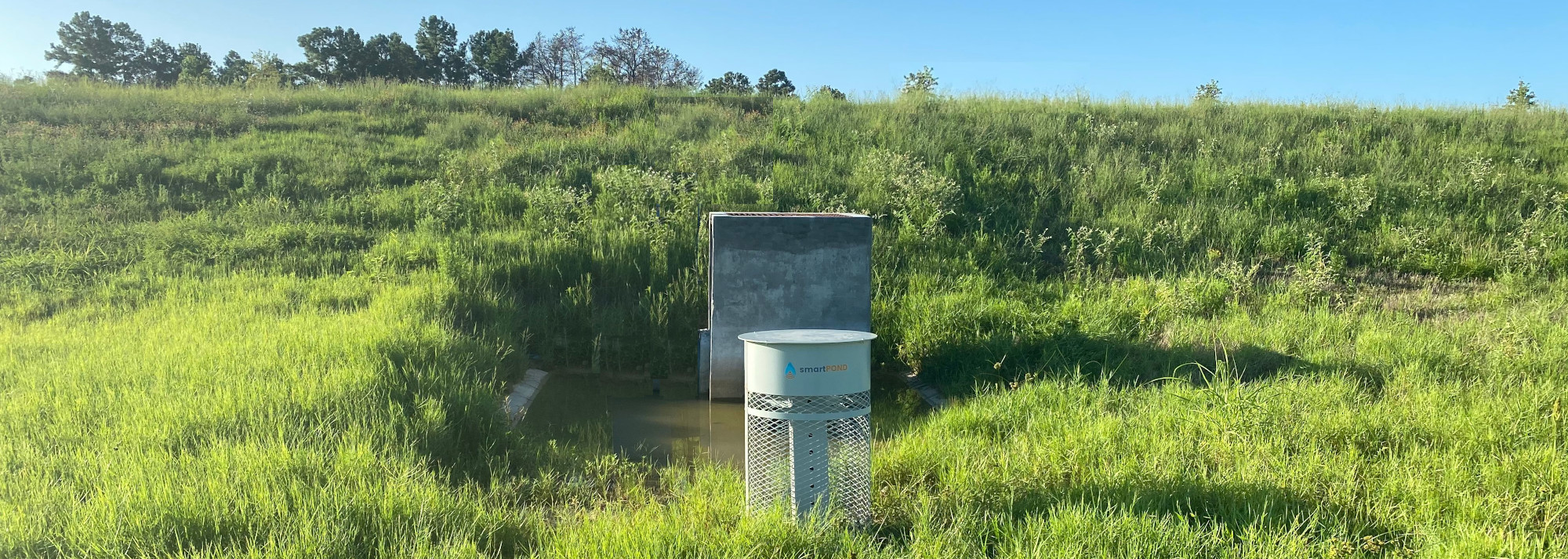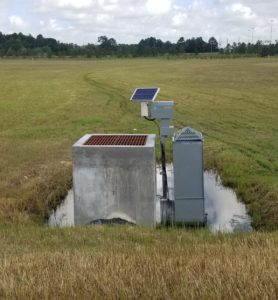
From Grey to Green to SMART
With SMART Infrastructure, the Sky is the Limit.
Grey
While material quality, engineering and product life expectancy have changed over the past 6,000 years the way stormwater is conveyed and managed has not evolved much since the days of hand spun clay pipes in the early drainage systems of 4000 BC Babylon in current day Iraq. Like today, the desire for cleanliness drove the movement. In Ancient Egypt, around 2300 BC, the early onset of urbanization was in its infancy. In the elite and religious sects of these early communities there was a desire to remove all waste, organic and inorganic, to nearby streams. The concept began to take hold as we moved into historic times. The use of subsurface clay pipes was reserved for the wealthiest areas, but drain ducts, or open masonry built “U” channels, were commonplace throughout much of the Roman Empire until it fell in 300 AD. In Medieval times nothing much seems to have progressed, and much like today, maintenance was generally ignored. In time of war, basic sanitation was a luxury that could not be afforded, despite the plagues that at times ravished the very troops fighting the wars. For centuries, the rivers of London and Paris were used to convey sewage and stormwater. In 1357 AD London passed a proclamation preventing waste from being disposed of into the rivers, fostering the original “Clean Water Act”. Over the course of the next 500 years, humanity struggled with the basics associated with simple wastewater disposal, battling epidemics and cholera outbreaks around the world. It was not until the early 1900’s, when the industrial age brought forth better engineering, that wastewater began to be managed separately from stormwater.
As sanitary sewage moved to underground pipes, most of the early stormwater systems were open ditches. Population growth in these major cities, generated suburban sprawl, which expanded the practice further and further into the suburbs. By the 1970’s developers were looking for new methods of stormwater management as a result of new regulations focused around fire code. When street widths grew for safety reasons the associated right-of-way widths also increased. This led to a decrease in lot yield with pressure placed on developer profits. For the first time, an economic case for curb and gutter began to make sense outside of urban centers. While the expense of larger streets and curb and gutter increased the overall cost of development, the land savings allowed by reclaiming the ditches was more than enough to offset these added costs.
However, another cost was looming. By the 1990’s, it became more and more evident that we were transitioning into a period of extremes. Extreme drought, extreme flooding, extreme hurricanes, extreme heat, extreme cold. Regardless of political leanings or the root causes of why it was occurring, it appeared to be a real trend. Decisions made over the past 200 years would soon be exposed as being insufficient with respect to stormwater management. In 2001, Tropical Storm Allison dropped up to 38 inches of rain when it stalled over Houston in a 6-day deluge. Roughly 73,000 homes were flooded and the world’s largest medical center was under water. The direct cost totaled nearly $6 Billion. While many said this might never happen again, it was merely a warning of what was to come.
While most stormwater management in the region up until this point had been focused on large reservoirs and regional detention, the need for smaller scale, site-based detention became a necessary option. Within a year of Tropical Storm Allison, new rules on detention required developers throughout Southeast Texas to have no net impact on downstream waters by requiring post development outfall rates to be less than pre-development rates. The default solution, the use of open dry-bottom detention basins with outfall pipes designed to restrict flow to predevelopment release rates became a standard engineering design practice. The prevailing thought was that if we could reduce stormwater release rates prior to discharge from the development, then we would reduce both flash flooding and downstream flooding. However, individual basins were not coordinated across the region and the timing relationship between basins became an issue. Ponds were designed to empty within 24 to 48 hours so that enough volume would be available for the next storm. Also, in an effort to prevent clogs of these ponds and the liability associated with properties flooding, the minimum restrictor size was established as a 6” orifice. In 2010 and 2011 the region fell into a drought that reduced annual rainfall totals to 30”, from our typical annual average of 54”. Concerns about water shortage became more of a topic than the normal overabundance. Regional drinking water storage reservoirs were full less than they had been since their construction.
Green
During this time, a movement was taking hold around Green Stormwater Infrastructure. These concepts focused on a nature-based stormwater design strategy that focused on mimicking predevelopment hydrology while managing both water quality and quantity volumes. In 2010, with the help of both Harris County and the City of Houston, a Low Impact Development Design Competition was hosted by the Houston Land/Water Sustainability Forum in an attempt to demonstrate that Green Stormwater Infrastructure is a tool that helps decrease peak flows in wet times and reduce irrigation needs in times of drought through the use of native and drought tolerant plantings. The competition was comprised of 22 integrated design teams made up of professional architects, civil engineers and landscape architects. The key result was that the Green Stormwater Infrastructure project designs produced real-world evidence that water quality goals can be met while more efficiently managing the 100-year, 24 hour storm using less land area than traditional ponds. In some cases development costs were reduced by up to 30%.
Based on these findings, Harris County and the City of Houston began working Green Stormwater Infrastructure (GSI) into their code. While the City made incremental movements toward adoption, the County took a more aggressive stance allowing GSI as an alternative with positive economic benefits including reductions in detention volume of up to 45%. For the Developer, this resulted in increases in lot yield. For the County, this meant less expensive construction costs on capital improvement projects as well as reduced annual maintenance to satisfy both the most stringent environmentalist and the taxpayer. Upon Commissioners Court approval of this design criteria in the Spring of 2011, forward-looking engineers and developers began implementing design strategies where traditional detention strategies would have killed the project either from the loss of land area or from the high cost of underground storage options.
At first, it was only the most challenging sites. Sites where the outfall depth was shallow and the detention requirements quite large, resulting in 25% or more of the development real estate being lost to a detention pond. With these projects the region started to understand the real advantages of Green Stormwater Infrastructure, or what we began calling “Multifunctional Design”. Like telecommunication advancements over the past 30 years, green stormwater infrastructure could also take economic advantage of achieving a multitude of tasks with a single solution. Where the cellphone of 1990 was capable of only making phone calls, the cell phone of today keeps you connected to every aspect of life, replacing an entire home of electronics that can now fit in your pocket. The development community began to envision the cost savings if similar approaches could be applied to stormwater management. Instead of grading parking lots to storm inlets connected by storm sewers draining through a water quality treatment device and then into a detention pond, what if we could simply grade the parking lot to the landscaping, incorporating a biofiltration system, that serves as catchment, conveyance, detention and water quality treatment? How much money and how much efficiency is gained by taking real-estate already dedicated to landscaping and repurposing it to manage your stormwater, making it multifunctional? This was the regions “a-ha” moment and the result has been eye-opening.
By 2015, over one hundred projects had taken advantage of this movement. However, the hydrology had not yet been truly tested by storms to rival Tropical Storm Allison. The theory and the models had all shown that extending the time of concentration and mimicking nature through the use of distributed detention in the form of biofiltration, bioswales, modern permeable pavers and other best management practices would cause a reduction in peak flows to less than predevelopment flows for the 100-year event. However, the region had been in a drought since the first pilot project was installed. This drought was soon over and the systems were about to be battle-tested like never before. In 2015 with the Memorial Day flood, portions of the Houston area received 12 inches of rainfall in 10 hours. In 2016 the Tax Day flood dumped as much as 16 inches over portions of the region in 12 hours. In August of 2017, Hurricane Harvey sat on top of the Houston area for 4 days drowning most of the city in over 40” of rainfall. In 2019 Tropical Storm Imelda piled on another 10” in one day over the eastern part of the region. Through all this, not a single GSI project in the region, even with their 45% detention reduction had flooding within the structure it served due to a lack of storage, a lack of maintenance, or a lack of performance. GSI effectively managed even the largest of storms just as the models predicted.
SMART
 While GSI has clearly been a success, it is nearly impossible, without significant funding, to retrofit an entire region the size of Houston to resolve challenges and conditions not address by 20th century design policy and practice. During Hurricane Harvey, one of the most frustrating aspects was seeing detention ponds partly full or empty while the rain was still coming down and streams were overflowing into our neighbor’s homes. Smart Infrastructure offers hope.
While GSI has clearly been a success, it is nearly impossible, without significant funding, to retrofit an entire region the size of Houston to resolve challenges and conditions not address by 20th century design policy and practice. During Hurricane Harvey, one of the most frustrating aspects was seeing detention ponds partly full or empty while the rain was still coming down and streams were overflowing into our neighbor’s homes. Smart Infrastructure offers hope.
With smart infrastructure the sky is the limit. Imagine the next hurricane approaches your region and all of your ponds are now Smart Ponds equipped with a motherboard, a telecommunication system, and an automated valve or weir. The entity that manages flooding in the region logs onto their computer from anywhere in the world and with a simple command every pond in the region is online and ready to do as told. This would allow these ponds to fill and not release or to release early and hold water until later. While ponds designed with emergency overflows may have erosion issues in the event the pond is breached, we would be able to keep billions of gallons of water from flowing downstream until it was safe. It has been noted that if we had smart controls on all the ponds northwest of the Addick’s and Barker Reservoirs in Houston, we could have prevented stormwater releases well in excess of downstream channel capacity which caused flooding of houses downstream. Harris County and Harris County Flood Control District are once again on the bleeding edge of testing out these new strategies, not simply relying on antiquated methods to solve future problems. For that we can be hopeful.
Smart infrastructure can also manipulate site hydrology similar to Green Stormwater Infrastructure. It can make real-time decisions on when to hold and when to release water downstream. It can be programed to hold water in the event of major storms and release in the event of minor. Unlike most Best Management Practices which are permanently fixed at the end of an outfall. Smart ponds can be iteratively reprogrammed if the initial setup fails to achieve the desired results. The programming can be easily revised and without hardware replacement.
Maintenance also becomes easier. One of the biggest challenges of any stormwater program is not just maintenance, but inspection. Smart infrastructure allows for the deployment of cameras and sensors. Inspectors can now know what’s going on with their stormwater management systems without driving to the site, allowing them to get real-time information from the site without leaving their desk. This allows the stormwater manager to focus their efforts on only BMP’s that are underperforming or that have maintenance needs, making the MS4 more efficient and effective in their implementation.
Many aspects of our lives have become automated, even some of the things we trust most. Everything from the locks on our door to our computer-controlled automobiles and the aircraft we fly on. Why do we not yet trust our stormwater to automation when we trust much more valuable things to automation? As technology has advanced, prices have come down, and technology companies are looking to stormwater as a new frontier. What they discover is a minefield of antiquated, contradictory and counterproductive regulation that is a nearly insurmountable obstacle to innovation and to the development of the functional national marketplace needed for new technologies to flourish and scale. Change is inevitably hard for most industries and it has been painfully slow in stormwater, but progress is being made and if for no other reason than our fundamental requirement for clean water for our existence, it is inevitable.
If the stormwater industry is to meet our country’s needs for future clean water supplies, we must continue to pursue the discovery of better methods. The challenge, much of the local and state regulators live in fear of repeating past failures, and ultimately it will it will continue to be what mires it’s future. So what must we do:
- Highly prescriptive specifications hinder innovation and has a lot to do with why Green Stormwater Infrastructure has taken thirty years to get to this point. A move to performance-based specifications that focus on achieving the goal rather than checking a box on one version of how to do something would be an enormous step. Prioritizing innovation means any prescriptive specification is going to have a short shelf life.
- Create a culture of innovation within all levels of stormwater regulation that focuses not on the way we’ve always done things, but on collaborating with innovators, vendors and all the stakeholders to come up with both improvements in existing ideology and new ways of tackling old problems.
- Support and become a stakeholder in the development of a nationally recognized testing and verification program for new stormwater technologies. (The STEPP program supported by the Water Environment Federation is well on the way to bringing this concept to fruition.) Use this tool to make informed decisions about which technologies to use, based on scientifically credible performance evaluations which are equally applied to all tested technologies.
- Knock down barriers to entry that make entering the stormwater industry so time consuming and expensive. Recognize that the cost to get a single Best Management Practice to market takes no less than 5 years from inception to being commercially viable, and costs often exceed $2,000,000.
This would simply be a start to creating a vibrant, problem-solving, industry growing at the same pace the rest of the world is growing. If the future of stormwater is automation and further advancement of GSI, let’s make certain this industry, for once, leads. Let’s not reflect thirty years from now on what could have been, but instead be proud of the strides we have taken to preserve and protect our nation’s future water supplies. Through curiosity, innovation and collaboration, together we can build a better future.



